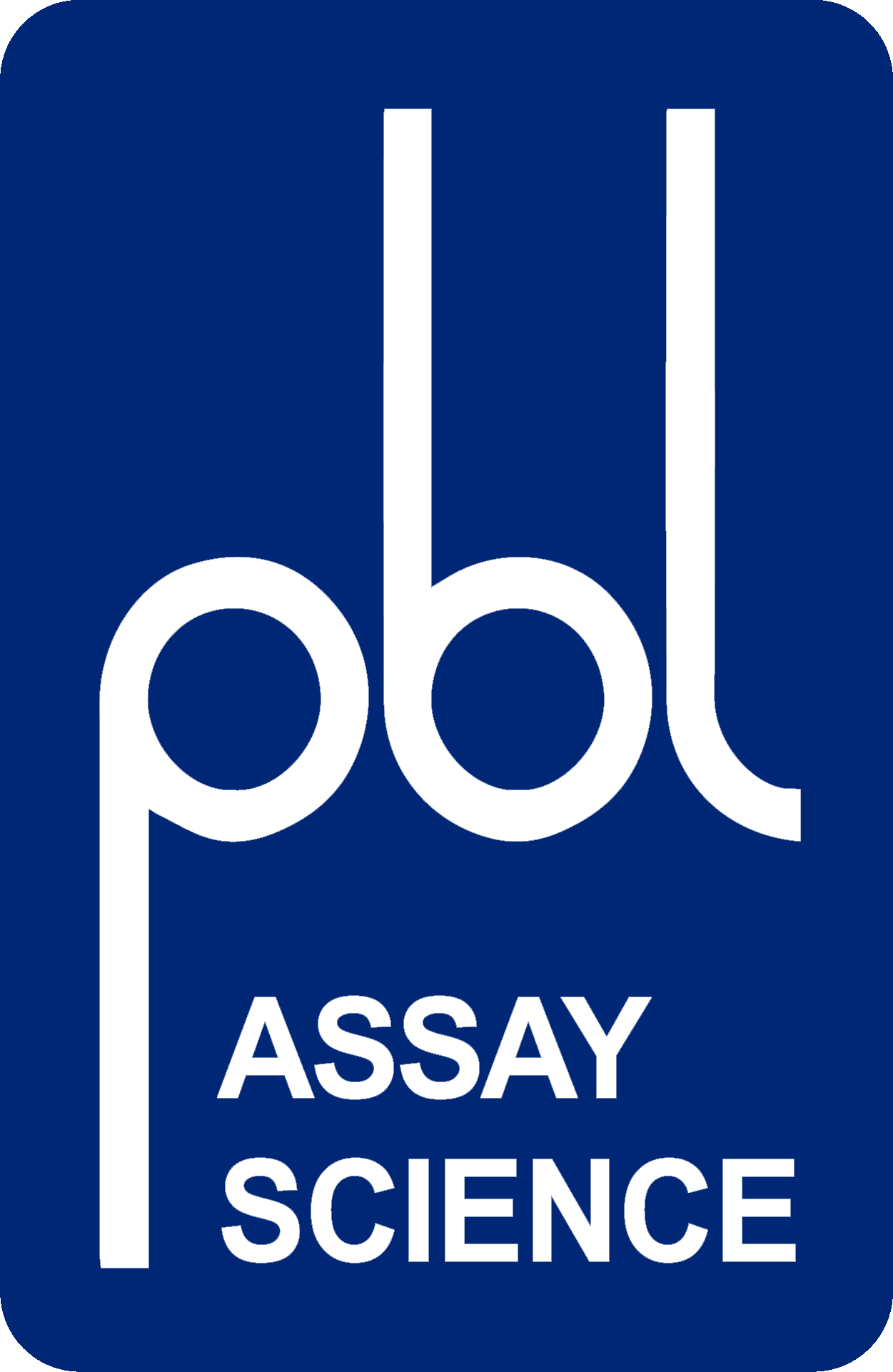Mouse IFN-Beta, Mammalian
Catalog Number: 12405
With a 10-fold greater specific activity than the E.coli derived protein, this authentic sequence of Mouse IFN-Beta protein is glycosylated and has no tag.
$295.00
Product Info
Measured using a cytopathic effect inhibition assay on Mouse (L929) cells with EMCV EC50 for IFN Beta is ~ 2.5 U/ml
Bioactivity
Specifications
| Formulation | Supplied frozen in 20mM Sodium Phosphate pH 6.4; 300mM NaCl; 5% Glycerol; 0.1% Bovine Serum Albumin (BSA) |
|---|---|
| Molecular Weight | 19.6 kDa |
| Source | Gene obtained from mouse DNA expressed in mammalian cells |
| Purity | > 95% by SDS-PAGE stained by Coomassie Blue Endotoxin level < 1 EU/μg |
| Storage | For retention of full activity store at -70°C or below and avoid repeated freeze/thaw cycles |
| Synonyms | Mouse Beta Interferon, Mouse IFN Beta, Mouse IFNB, Mouse Type I IFN beta, Mouse Fibroblast IFN, Mouse Fibroblast Interferon, Mouse Beta IFN, Mouse Type I Interferon Beta |
| Accession Number | K00020 |
Tech Info & Data
Background
Interferons (IFNs) are a family of mammalian cytokines produced by macrophages, neutrophils, dendritic cells and other somatic cells in response to viruses and pathogens. IFN-Beta is classified as a type I IFN and is produced by fibroblast and a variety of cell types in response to viral challenge. Although all type I IFNs bind to the same type I IFN receptor complex, studies have shown that IFN-Beta signals differently than IFN-Alpha. Furthermore, it has been shown that IFN-Beta exerts preferential induction of apoptotic effect on melanoma cells. These findings, along with the therapeutic use of IFN-Beta in Multiple Sclerosis and hepatitis C, make further understanding of IFN-Beta biological activities an important area of research.
The mammalian expressed mouse IFN-Beta protein is designed to provide scientists with a highly active recombinant protein that closely resembles native mouse IFN-Beta.
Citations
16 Citations
- Scott, H. M. et al., (2024), "Serine/arginine-rich splicing factor 7 promotes the type I interferon response by activating Irf7 transcription", Cell Rep. 43(3):113816, PMID: 38393946, DOI: 10.1016/j.celrep.2024.113816 (link)
- Mine, K. et al., (2024), "TYK2 signaling promotes the development of autoreactive CD8+ cytotoxic T lymphocytes and type 1 diabetes", Nat Commun. 15(1):1337, PMID: 35381043, DOI: 10.1038/s41467-024-45573-9 (link)
- Miyauchi, S. et al., (2023), "Reprogramming of tumor-associated macrophages via NEDD4-mediated CSF1R degradation by targeting USP8", Cell Rep., 42(12):113560, PMID: 38100351, DOI: 10.1016/j.celrep.2023.113560 (link)
- Wang, R. et al., (2023), "Antitumor activity of pegylated human interferon b as monotherapy or in combination with immune checkpoint inhibitors via tumor growth inhibition and dendritic cell activation", Cell Immunol., 393-394:104782, PMID: 37931572, DOI:10.1016/j.cellimm.2023.104782 (link)
- de Pablo, N., et al., (2023), "Lipin-2 regulates the antiviral and anti-inflammatory responses to interferon", EMBO Reports, e57238, DOI: 10.15252/embr.202357238
- Luo, X., et al., (2023), "hESC-Derived Epicardial Cells Promote Repair of Infracted Hearts in Mouse and Swine", Adv Sci, e2300470, PMID: 37505480, DOI: 10.1002/advs.202300470 (link)
- Schwanke, H. et al., (2023), "The Cytomegalovirus M35 Protein Directly Binds to the Interferon-b Enchancer and Modulates Transcription of ifnb1 and Other IRF3-Driven Genes", J Virol., e0040023, PMID: 37289084, DOI: 10.1128/jvi.00400-23 (link)
- Qu, Y. et al., (2023), "SARS-CoV-2 Inhibits NRF2-Mediated Antioxidant Responses in Airway Epithelial Cells and in the Lung of a Murine Model of Infection", Microbio. Spectr. e0037823, PMID: 37022178, DOI: 10.1128/spectrum.00378-23 (link)
- Liang, Z. et al. (2023), "The phenotype of the most common human ADAR1p150 Za mutation P139A in mice is partially penetrant", EMBO Rep., e55835, PMID: 36975179, DOI: 10.15252/embr.202255835 (link)
- Lee, J.V. et al., (2022), Combinatorial immunotherapeuties overcome MYC-driven immune evasion in triple negative breast cancer, Nat. Commun., 13(1):3671, PMID: 35760778, DOI: 10.1038/s41467-022-31238-y (link)
- Alphonse, N. et al., (2022), "A family of conserved bacterial virulence factors dampens interferon responses by blocking calcium signaling", Cell, S0092-8674(22)00526-8, PMID: 35568036, DOI: 10.1016/j.cell.2022.04.028 (link)
- Tang, Z. et al., (2021), "Inflammatory macrophages exploit unconventional pro-phagocytic integrins for phagocytosis and anti-tumor immunity", Cell Reports, 37:110111, DOI: 10.1016/j.celrep.2021.110111. (link)
- Zhang et al., (2020), Type I interferon signaling mediates Mycobacterium tuberculosis-induced macrophage death, JEM 218(2), PMID: 33125053 (link)
- Mine, Keiichiro, et al. (2019). Impaired upregulation of Stat2 gene restrictive to pancreatic β-cells is responsible for virus-induced diabetes in DBA/2 mice. Biochemical and Biophysical Research Communications, 8 pgs. PMID: 31708097. (link)
- Wang, Kuan-Chung (2018). Dichotomy of TNF Family Ligands Expression on Classical Dendritic Cells and Monocyte-Derived Antigen Presenting Cells During Viral Infection. University of Toronto, 92 pgs. PMID: no PMID. (link)
- Masroori, Nasser, et al. (2016). The Interferon-Induced Arrival Protein PML (TRIM19) Promotes the Restriction and Transcriptional Silencing of Lentiviruses in a Context-Specific, Isoform-Specific Fashio), "n. Retrovirology, 17 pgs. PMID: 27000403. (link)

